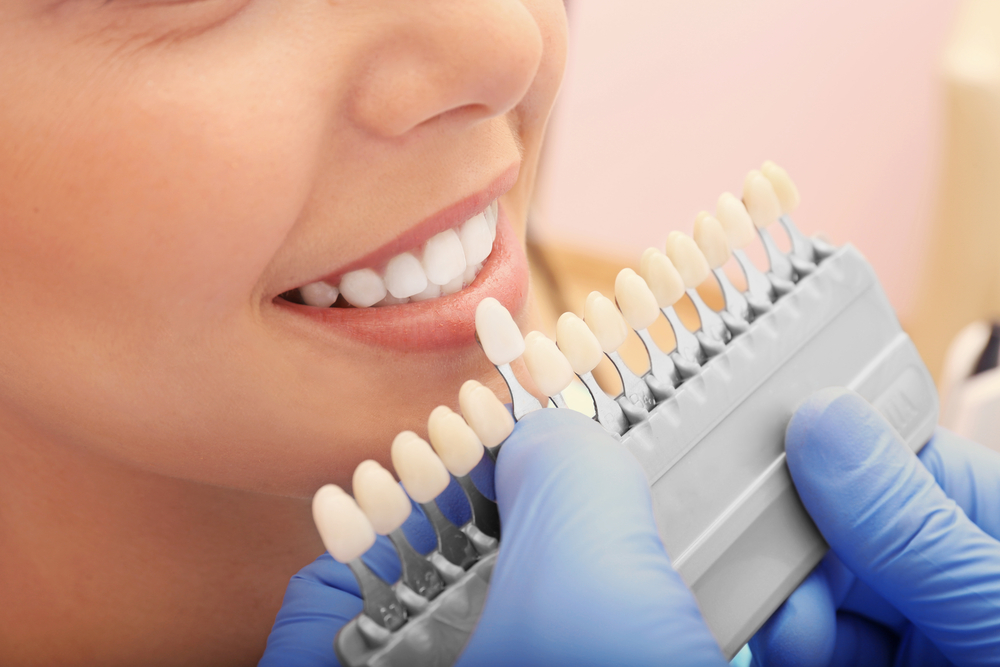Cosmetic
Dentistry
Dental Bonding in Pembroke, ON
A Simple Way to Repair Damaged Teeth
Are you tired of hiding your damaged or imperfect teeth? Dental bonding at Parkview Dental in Pembroke, ON, may be the solution you’ve been looking for! Our skilled dentist, Dr. James Munro, offers top-quality dental bonding procedures to transform your smile, restore confidence, and improve oral health. Say goodbye to chipped, cracked, or discolored teeth and embrace a natural-looking, radiant smile. Read on to discover the incredible benefits of this simple cosmetic procedure.
What is Dental Bonding?

What Can Dental Bonding Fix?
Dr. Munro utilizes dental bonding to address various dental issues, including:
- Decayed Teeth: Dental bonding can effectively repair teeth affected by decay, restoring their structural integrity and preventing further damage.
- Chipped or Cracked Teeth: If you have chipped or cracked teeth, dental bonding offers a reliable solution to restore their appearance and function.
- Stained or Discolored Teeth: Dental bonding can improve the aesthetics of stained or discolored teeth, enhancing your smile and boosting your confidence.
- Spacing Issues: Tooth bonding can close gaps between teeth, creating a more harmonious and aligned smile.
- Tooth Lengthening: Dental bonding can also extend the length of teeth, improving their overall proportion and enhancing your smile.
- Tooth Reshaping: If you have misshapen teeth, dental bonding allows Dr. Munro to reshape them, creating a more symmetrical and aesthetically pleasing appearance.
- Root Protection: Dental bonding safeguards exposed tooth roots, reducing sensitivity and protecting against further damage.
Benefits of Dental Bonding
Dental bonding offers numerous advantages that contribute to its popularity as a dental treatment option. Let’s explore some of the key benefits:
- Versatility: Dr. Munro utilizes dental bonding for cosmetic and restorative purposes, providing comprehensive solutions for various dental concerns.
- Affordability: Compared to more expensive alternatives like porcelain veneers, dental bonding is cost-effective, making it accessible to more patients.
- Efficiency: At Parkview Dental, your dental bonding treatment can typically be completed in just one visit. With each tooth requiring approximately one hour, you can enjoy immediate results and minimal disruption to your daily routine.
- Durability: Dental bonding can withstand the demands of everyday activities, offering longevity that can extend up to 10 years with proper care. This ensures a durable and reliable restoration of your teeth.
- Minimally Invasive: Unlike invasive procedures, dental bonding is a non-surgical and virtually painless treatment. It provides an excellent alternative for patients seeking a comfortable dental experience.
How Does Dental Bonding Work?
 Consultation and Preparation
Consultation and Preparation
During your initial consultation with Dr. Munro at Parkview Dental, he will examine your teeth, discuss your goals and expectations, and determine if dental bonding is the best treatment for you. If bonding is recommended, the process will begin with the preparation of your teeth.
Tooth Preparation
In most cases, dental bonding requires minimal tooth preparation. The dentist will lightly etch the surface of the tooth to create a rough texture, allowing the bonding material to adhere effectively. This process is painless and typically does not require anesthesia.
Bonding Material Application
Next, Dr. Munro will apply a tooth-colored, putty-like resin material onto the prepared tooth. This resin is carefully selected to match the shade of your natural teeth, ensuring a seamless and natural-looking result. Your dentist will mold and shape the resin to achieve the desired shape and contour.
Bonding and Curing
Once the bonding material is in place, Your Pembroke dentist will use a special light or laser to bond and harden the material onto the tooth surface. This process, called curing, activates a chemical reaction within the resin, causing it to harden and bond securely to the tooth. Dr. Munro will ensure the bonding material is cured for optimal strength and durability.
Finishing Touches
After the bonding material has cured, Dr. Munro will trim and shape it further to achieve the desired appearance. The tooth will be polished to match the sheen of your natural teeth, resulting in a seamless blend and a beautiful, natural-looking smile.
Frequently Asked Questions
How long does dental bonding last?
The longevity of dental bonding can vary depending on various factors, such as oral hygiene practices, dietary habits, and the extent of wear and tear. With proper care and regular dental check-ups, dental bonding can last up to five to 10 years. Bonding material may require repair or replacement to maintain its optimal condition.
Can dental bonding be whitened?
Unlike natural teeth, dental bonding material cannot be whitened through traditional teeth whitening procedures. If you’re considering teeth whitening, discuss your options with your dentist. They can recommend alternative solutions to achieve a brighter and more uniform smile, such as porcelain veneers or professional teeth whitening treatments.
Does dental bonding hurt?
No, dental bonding doesn’t hurt. Most patients report minimal discomfort during the procedure. If needed, your dentist can administer local anesthesia to ensure your comfort. After the bonding is complete, you may experience slight sensitivity, but it should subside shortly.
Is dental bonding cheaper than dental veneers?
Yes, dental bonding is generally more cost-effective than dental veneers. While the exact cost may vary depending on factors such as the number of teeth requiring treatment and the complexity, dental bonding offers a more affordable alternative to achieve cosmetic enhancements.

 Consultation and Preparation
Consultation and Preparation